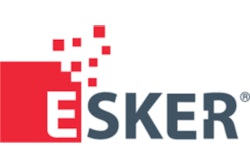
Cell and Advanced Therapies Supply Chain Management Market: Focus on Technological Solutions, 2019-2030 report features an extensive study of the growing supply chain management software solutions market.
The focus of this study is on software systems, including cell orchestration platforms (COP), enterprise manufacturing systems (EMS), inventory management systems (IMS), laboratory information management systems (LIMS), logistics management systems (LMS), patient management systems (PMS), quality management systems (QMS), tracking and tracing software (TTS), and other such platforms that are being used to improve / optimize various supply chain-related processes of cell and advanced therapies.
One of the key objectives of the report was to understand the primary growth drivers and estimate the future size of the supply chain management software solutions market. Based on multiple parameters, such as number of cell and advanced therapies under development, expected pricing, likely adoption rates, and potential cost saving opportunities from different software systems, we have developed informed estimates of the evolution of the market, over the period 2019-2030.
In addition, we have provided the likely distribution of the current and forecasted opportunity across:
- [A] different software systems (COP, EMS, IMS, LIMS, LMS, PMS, QMS, and TTS)
- [B] applications (donor eligibility assessment, sample collection, manufacturing, logistics, and patient verification and treatment follow-up)
- [C] modes of deployment (cloud and on-premises)
- [D] end users (biobanks, cell therapy labs, hospitals, research institutes, and commercial organizations)
- [E] key geographical regions (North America, Europe and Asia-Pacific)
Advanced therapy medicinal products, such as cell and gene therapies, have revolutionized healthcare practices. The introduction of such treatment options has led to a paradigm shift in drug development, production and consumption. Moreover, such therapies have actually enabled healthcare providers to treat several difficult-to-treat clinical conditions.
In the past two decades, more than 30 such therapy products have been approved; recent approvals include Zolgensma (2019), RECELL System (2018), AmnioFix (2018), EpiFix (2018), EpiBurn (2018), Alofisel (2018), LUXTURNA (2017), Yescarta (2017), and Kymriah (2017). Further, according to a report published by The Alliance for Regenerative Medicine in 2019, more than 1,000 clinical trials are being conducted across the globe by over 900 companies.
In 2018, around USD 13 billion was invested in this domain, representing a 73% increase in capital investments in this domain, compared to the previous year. It is worth highlighting that, based on an assessment of the current pipeline of cell therapies and the historical clinical success of such products, it is likely that around 10-20 advanced therapies are approved by the US FDA each year, till 2025.
The commercial success of cell and advanced therapies is not only tied to whether they are capable of offering the desired therapeutic benefits, but also on whether the developers are able to effectively address all supply chain requirements. The advanced therapy medicinal products supply chain is relatively more complex compared to the conventional pharmaceutical supply chain. As a result, there are a number of risks, such as possible operational inefficiencies, capacity scheduling concerns, process delays leading to capital losses, and deliverable tracking-related issues, which need to be taken into consideration by therapy developers.
This has generated a need for bespoke technological solutions, which can be integrated into existing processes to enable the engaged stakeholders to oversee and manage the various aspects of the cell and advanced therapies supply chain, in compliance to global regulatory standards. Over the years, several innovative, software-enabled systems, offering supply chain orchestration and needle-to-needle traceability, have been developed.
The market has also recently witnessed the establishment of numerous partnerships, most of which are agreements between therapy developers and software solutions providers. Further, given the growing demand for cost-effective personalized medicinal products, and a myriad of other benefits of implementing such software solutions, the niche market is poised to grow significantly in the foreseen future.
Amongst other elements, the report features:
- A detailed assessment of the current market landscape, featuring a comprehensive list of over 160 technological platforms that are being used to manage the cell and advanced therapies supply chain, along with information on the different types of software systems (COP, EMS, IMS, LIMS, LMS, PMS, QMS, TTS, and others), their key specifications and benefits (chain of identity and custody, compatibility and integration, data management and analytics, regulatory compliance, reliability and security, scalability, software-as-a-service, traceability, user-friendliness, workflow management, and others), affiliated modes of deployment (cloud and on-premises), scale of management (small enterprise, mid-size enterprise and large enterprise), end users (biobanks, cell therapy labs, hospitals, research institutes, commercial organizations, and others), applications (ordering and scheduling, sample collection, manufacturing, logistics, and patient verification and treatment follow-up), regulatory certifications / accreditations (21 CFR Part 11, CLIA, FACT-JACIE, GAMP 5, GDPR, HIPAA, and others), and key support services offered (customization, installation / implementation, maintenance, training / technical support, upgradation, validation and testing, and others).
- An insightful company competitiveness analysis, taking into consideration the supplier power (based on their employee base and years of experience in the industry) and portfolio-related parameters, such as number of software solutions offered, affiliated modes of deployment, scale of management, end users, applications, regulatory certifications / accreditations, support services offered, and key platform specifications and benefits.
- Comprehensive profiles of industry players that are currently offering software solutions for supply chain management, featuring an overview of the company, its financial information (if available), and a detailed description of its software system(s). Each profile also includes a list of recent developments, highlighting the key achievements, partnership activity, and the likely strategies that may be adopted by these players to fuel growth, in the foreseen future.
- A detailed review of the cell and advanced therapies supply chain, offering insights on the processes associated with various stages, such as donor eligibility assessment, sample collection, manufacturing, logistics, and patient verification and treatment follow-up, along with information on cost requirements and existing opportunities for improvement in the supply chain management practices.
- A qualitative assessment of the current and long-term needs of different stakeholders (patients, healthcare providers, collection centers, manufacturers, logistics service providers and regulators / payers) involved in the cell and advanced therapies supply chain, featuring a summary of the diverse needs and areas of concern, along with our opinion (based on past and prevalent trends) on how the industry is preparing to address such issues.
- An analysis of the investments made at various stages of development, such as seed financing, venture capital financing, debt financing, grants, capital raised from IPOs and subsequent offerings received by companies that are engaged in this field.
- An analysis of the partnerships that have been established in the domain, in the period between 2014 and Q3 2019, covering software licensing agreements, mergers and acquisitions, product development agreements, product integration agreements, distribution agreements, asset purchase agreements, and other relevant deals.
- A detailed analysis of the platform utilization use cases where aforementioned software systems were leveraged by various stakeholders in the domain, in the period between 2014 and Q3 2019, highlighting the ways in which companies have implemented such systems to improve / optimize various supply chain-related processes of cell and advanced therapies.
- An in-depth analysis of the cost saving potential across various processes of the cell and advanced therapies supply chain that can be brought about by the implementation of bespoke and integrated technological solutions / software systems.
- A case study on COPs, featuring insights on their key functions and implementation strategies, while also considering their strategic position and connectivity with other adjacent systems within the cell and advanced therapies supply chain. In addition, it provides a brief discussion on the growing popularity of COPs on the social media platform, Twitter.
In order to account for the uncertainties associated with some of the key parameters and to add robustness to our model, we have provided three market forecast scenarios portraying the conservative, base and optimistic tracks of the industry's evolution.


















